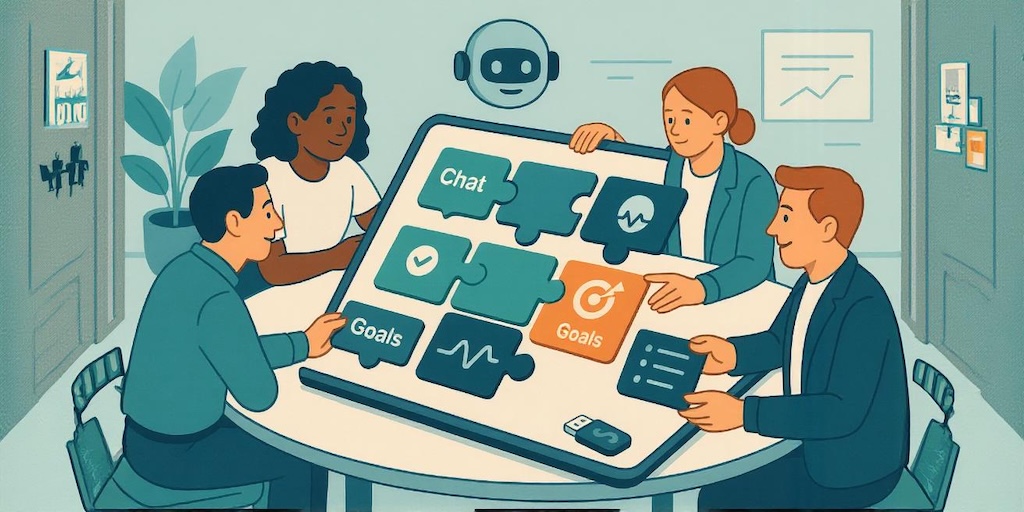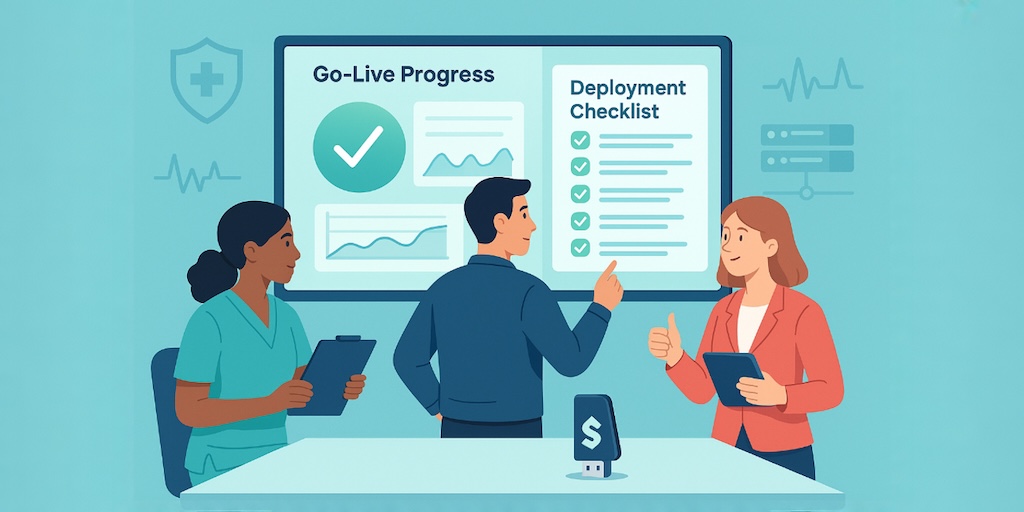Mental Health EHR Requirements: Key Features and Compliance Needs
When you hear mental health EHR requirements, you’re probably not picturing an adrenaline rush. But let’s face it—choosing the right electronic health record system for a mental health practice is closer to skydiving than filing paperwork. Pick the wrong system, and you’re freefalling through regulatory nightmares, billing chaos, and clinician burnout. No parachute included.
Did you know that only 6% of behavioral health facilities and 29% of substance use disorder (SUD) treatment centers are fully digital, compared to over 80% of general hospitals? Clearly, there’s something uniquely challenging about getting this right. Let’s unpack the essentials, skip the fluff, and land safely on the other side.
Key Takeaways
- Mental health EHRs require specialized compliance beyond generic healthcare systems.
HIPAA’s psychotherapy note protections, 42 CFR Part 2 for substance use records, and the Cures Act’s data-access rules are non-negotiables. A mental health EHR must have role-based access controls, advanced consent management, and teletherapy-specific compliance baked in from day one. - An MVP-level mental health EHR can be lean but still meet all regulatory “red lines.”
The blog outlines a blueprint that balances speed-to-market with compliance essentials: segregated psychotherapy notes, HIPAA-grade security, 42 CFR Part 2 toggles, and basic telehealth features. Add-ons like AI scribing and advanced analytics can follow once product-market fit is proven. - Successful EHR adoption is ops, not hype. Clean data migration, role-specific training (8–16 hours per role), and phased pilots drive real uptake. Using Specode’s HIPAA-ready healthcare AI builder for rapid, guardrailed customization compresses timelines by up to 10× while minimizing clinical disruption.
What Is a Mental Health EHR?
At its simplest, a mental health Electronic Health Record (EHR) is software specifically designed to digitize patient records and streamline clinical operations in behavioral health practices.
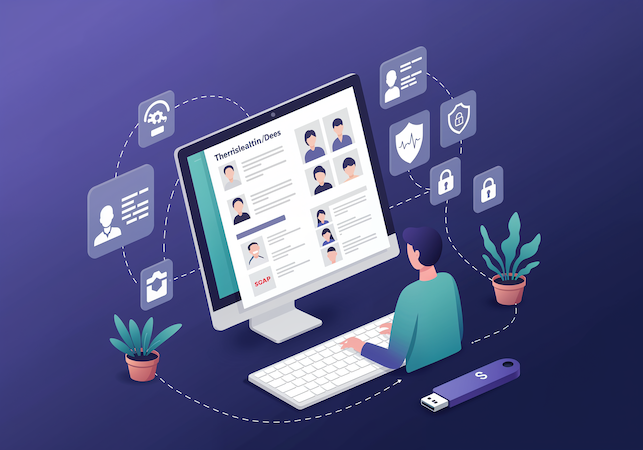
But let’s be honest—it’s more than just an electronic file cabinet. Unlike generic medical EHRs built around physical diagnostics and lab results, mental health EHRs are narrative-driven, deeply focused on:
- patient interactions
- psychotherapy notes
- complex privacy regulations
A solid mental health EHR handles clinical documentation flexibility, offering customizable note templates like SOAP or DAP formats, which traditional medical EHRs often neglect. These platforms also provide integrated tools for teletherapy, outcome measurements (think built-in PHQ-9 and GAD-7 assessments), and specialized compliance for sensitive psychotherapy notes and substance use disorder records.
In other words, a mental health EHR isn’t merely an operational tool—it’s a purpose-built solution designed to support therapists’ nuanced workflows while safely navigating regulatory minefields unique to behavioral health.
If you’re exploring how to build a mental health app that goes beyond basic scheduling or teletherapy, understanding EHR fundamentals is a must. Many successful mental health platforms bake in EHR-like features early on—secure clinical notes, consent management, and outcome tracking—to future-proof compliance and user trust from day one.
Are EHR Systems Required for Mental Health Providers?
If you’re asking yourself, “are EHR required for mental health practices?” you’re not alone—and the short answer is: technically no, but practically yes. There’s no sweeping federal law demanding that every therapist or counselor immediately digitize their records.
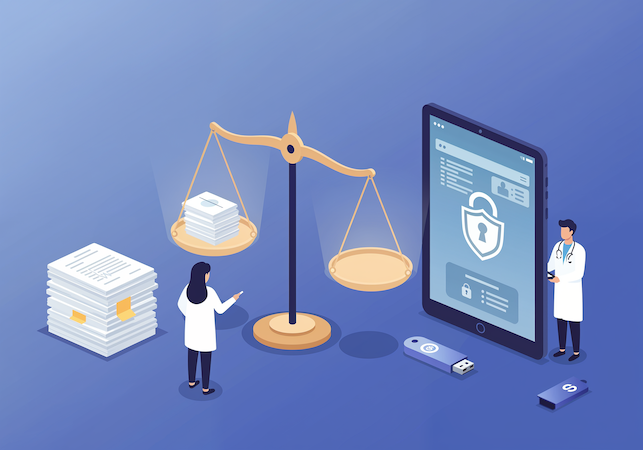
But here’s the catch—the federal government, especially through Medicare and Medicaid, makes it increasingly painful not to.
Medicare’s “Promoting Interoperability” programs effectively mandate Certified EHR Technology (CEHRT) use by tying it directly to payment adjustments. For founders exploring health app development, understanding these regulatory drivers is crucial since most modern solutions require seamless EHR connectivity to qualify for reimbursements and interoperability programs. Don’t comply, and you’ll quickly see reimbursement penalties that start small—around 1% per year—but steadily grow, making paper charts feel about as viable as dial-up internet.
And just as you’ve settled into federal compliance, states decide to up the ante. For instance:
- Connecticut now explicitly mandates connection to its state Health Information Exchange (HIE), “Connie,” for all behavioral health providers.
- Florida demands data stays domestic, no Canadian (or further-flung) cloud allowed.
- California’s ambitious CalMHSA initiative similarly pushes providers toward EHR interoperability to participate in statewide behavioral health programs.
In short, while nobody’s forcing a tablet into your hands, the evolving landscape of penalties, incentives, and state-specific mandates makes an EHR practically essential. You can technically cling to your paper notes, but it’ll soon feel like bringing a butter knife to a digital sword fight.
If you’re looking for a deeper breakdown of how to meet these interoperability and compliance standards, check out our EHR data integration guide to see how modern systems exchange data across healthcare ecosystems without compromising security.
Key Requirements for Mental Health EHR Systems
When navigating EMR requirements for mental health providers, there’s a lot more at stake than digitizing patient notes. The unique complexities of behavioral healthcare demand specialized features and compliance capabilities beyond generic healthcare record systems.

Here are four critical areas your EHR absolutely must nail:
1. HIPAA Compliance (Psychotherapy Note Protections)
HIPAA governs all health information, but mental health providers have additional obligations around psychotherapy notes—those private therapist impressions and analyses of sessions. Your EHR features must include robust, role-based access controls to strictly separate psychotherapy notes from standard medical records.
Sharing these notes without explicit patient consent is a direct HIPAA violation, making technical separation crucial for avoiding hefty fines.
Modern AI agents for healthcare compliance can further reduce risk by automatically flagging access anomalies, tracking consent updates, and monitoring data flows to ensure these strict privacy rules are met without adding extra manual oversight.
2. Substance Use Disorder Confidentiality (42 CFR Part 2)
Practices treating substance use disorders (SUD) face even stricter confidentiality rules than HIPAA:
- Your EHR must clearly flag SUD-related information to prevent unauthorized redisclosure without patient consent.
- Robust consent management capabilities must be in place to track and enforce patient permissions efficiently, ensuring full compliance with 42 CFR Part 2.
3. Patient Access & Cures Act Compliance
The 21st Century Cures Act demands patients have immediate access to their health data. Delays aren’t just inconvenient—they’re illegal. Your mental health EHR should provide rapid, seamless patient access through a secure, integrated patient portal.
This ensures compliance and reduces potential regulatory headaches. Remember, psychotherapy notes remain an exception, reinforcing the need for precise data segmentation features.
4. Teletherapy-Specific Compliance
Teletherapy has transformed behavioral health care delivery but brought unique compliance challenges:
- Your telehealth platform must be fully HIPAA-compliant with signed Business Associate Agreements (BAAs).
- The EHR should integrate built-in informed consent documentation and automatically capture patient locations during sessions to comply with interstate licensing rules and minimize liability risks.
When evaluating solutions, look for the best HIPAA compliant telehealth platform that integrates seamlessly with your EHR, ensuring teletherapy sessions remain secure while keeping all regulatory boxes checked.
These requirements aren’t optional—they’re essential compliance pillars that ensure patient trust, streamline care, and protect your practice from potentially severe regulatory and legal consequences. Choosing an EHR without these specialized capabilities is a risk you simply can’t afford.
Mental Health EHR MVP Blueprint
Below is a “small-but-serious” blueprint I give founder teams that want to ship an MVP-level mental-health EHR without painting themselves into a compliance corner. Think of the first column as the non-negotiables you need to demo to your first clinician pilot or payer conversation; everything in the second column can follow once product-market fit is clearer.

This same approach applies to patient management platform development, where starting with HIPAA-grade security, streamlined patient data workflows, and minimal viable features ensures compliance and scalability without bloating the MVP.
Technical guard-rails you can’t skip
- Security Risk Analysis (SRA) documented before first prod PHI.
- Audit-log WORM storage (write-once-read-many) – regulators ask for it first.
- Disaster-recovery RTO/RPO ≤24 h / 24 h––expect it in payer security questionnaires.
Product strategy tips
- Certifications only when they unlock revenue. ONC §170 certification is costly; defer until you need Medicare, state Medicaid, or enterprise health-system deals.
- Build segmenting first, interfaces later. Data-tag architecture (user-role + consent + data-class) is much harder to retrofit than a FHIR façade.
- Ship with one opinionated workflow (e.g., private-practice therapy) and hide bells-&-whistles behind flags so you don’t overcomplicate onboarding.
This roadmap keeps your initial surface area tiny while covering every “show-stopper” compliance line item investors, clinicians, and early payers will ask about—letting you iterate on user-experience and analytics once you have real-world traction.
Challenges in Implementing Mental Health EHRs
Let’s be blunt—adopting EHR software isn’t exactly a picnic for mental health professionals. There’s a reason why behavioral health still trails far behind general medicine in digital adoption: mental health-specific challenges make the switch uniquely tricky.
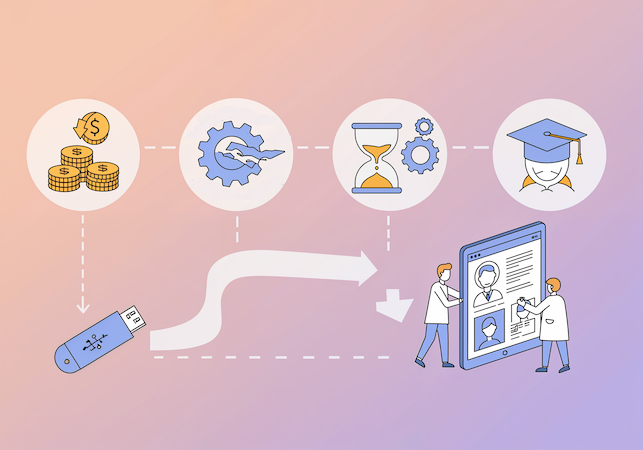
Here are the most common obstacles practices face:
Financial Barriers
First, sticker shock. Healthcare professionals quickly discover that real-world implementation costs far exceed initial estimates. Beyond monthly fees, hidden expenses pile up fast:
- Data migration: Typically $2,000–$15,000 depending on patient volume.
- Add-on fees: Telehealth integrations, billing clearinghouses, and credit card processing can significantly inflate ongoing costs.
Understanding telemedicine app development cost early on can help founders budget for these add-ons and avoid being blindsided by integration expenses during implementation.
Operational Disruptions
Transitioning to new EHR software is less like switching laptops and more like replacing your car engine on a freeway—complicated and disruptive. Operational headaches commonly include:
- Workflow slowdowns during initial adoption.
- Documentation backlogs that temporarily hurt productivity.
- Realistic implementation timelines ranging from 60–90 days for small groups to as much as six months for larger practices.
This is especially true for practices moving toward mobile-first care models, where m-health app development adds another layer of complexity—from ensuring cross-platform performance to maintaining strict HIPAA compliance on every device.
Training Demands
There’s no skipping proper training when introducing complex information technology. Failing to invest in adequate training can cause significant compliance risks and staff burnout:
- Clinical teams typically require 8–16 hours of training at $50–$200 per hour per employee.
- Insufficient training often leads directly to expensive mistakes, frustrated staff, and potential compliance breaches.
Yes, these hurdles can feel intimidating, but let’s be clear: the right mental health EHR implementation is not just an IT upgrade—it’s a strategic leap that transforms how effectively your practice operates and competes in today’s digital healthcare landscape.
Best Practices for EHR Integration in Behavioral Health
Integrating EHR systems into your behavioral health practice can transform clinical care—but only if done correctly. Here’s how to smoothly implement health records without disrupting your entire operation:
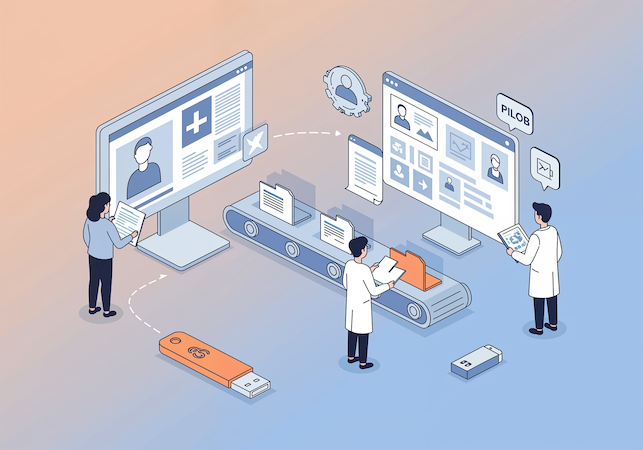
1. Data Migration Strategies
Don’t underestimate migration—it’s the easiest place to get burned.
- Prioritize critical patient data (diagnoses, medications, allergies) first, followed by historical notes.
- Cleanse and standardize records before migrating to avoid importing garbage data into your shiny new system.
- Work closely with your EHR vendor to define a detailed migration plan upfront—surprises aren’t welcome here.
For instance, when you develop a doctor appointment app that integrates with EHRs, planning data synchronization and avoiding fragmented patient records from day one is crucial for both clinical accuracy and user experience.
2. Staff Training Best Practices
Health professionals aren’t IT experts, so train smartly:
- Provide role-specific training sessions (clinicians, billing staff, front-desk).
- Supplement live sessions with quick-reference videos or cheat sheets.
- Plan for about 8–16 hours of total training per staff member, spread across manageable sessions to avoid overwhelm.
This structured approach is especially important in senior care app development, where staff often juggle both clinical and non-clinical workflows, and intuitive EHR integration can make or break adoption.
3. Phased Implementation (Pilot Programs)
Rolling out new technology isn’t an all-or-nothing gamble:
- Start with a pilot program involving your most tech-savvy staff to iron out initial issues.
- Expand gradually after evaluating pilot outcomes, adjusting workflows and training accordingly.
- Document lessons learned clearly—this knowledge pays dividends during wider implementation.
Remember, a well-executed EHR integration isn’t about perfection from day one; it’s about steady, manageable progress that makes everyone’s job easier over time.
Also Read: A Guide to Starting a Teletherapy Practice
How Specode Streamlines Mental Health EHR Integration
Here’s the truth: integrating EHR systems into your mental health practice can feel overwhelming—until it doesn’t. Specode’s built-in, fully compliant EHR layer is specifically crafted to streamline every step from patient onboarding to regulatory compliance.
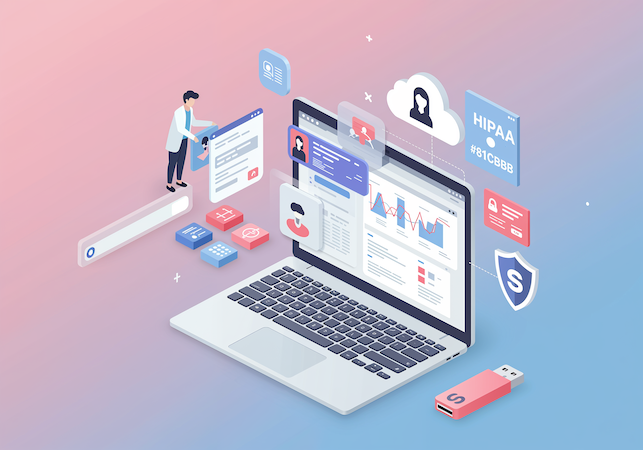
Specode isn’t your average platform: it delivers a powerful blend of rapid no-code speed and deep custom-code flexibility, meaning your app gets built up to 10x faster than traditional methods—without sacrificing quality or compliance.
Under the hood, Specode features institutional-grade EHR, giving you enterprise-level robustness and seamless integrations, but with Specode’s signature simplicity and affordability. And if you already have an EHR you love, no problem—we smoothly integrate with your existing system, too.
Here’s what else sets Specode apart:
- Rapid Customization: Quickly tailor your app to the unique workflows and clinical documentation styles essential in mental health.
- Built-in HIPAA Compliance: Comprehensive, baked-in security protocols ensure patient data stays protected from day one—no retrofitting compliance required.
- Flexible Integration: Specode easily integrates with your existing workflows, allowing for seamless interoperability without downtime or disruption.
- AI-Assisted Automation: Reduce clinician burnout with automated EMR workflows, intelligent documentation, and streamlined teletherapy integrations.
Healthcare AI Builder: Build by Chat, See It Live
Describe the mental-health flow you want—onboarding → intake (PHQ-9/GAD-7) → scheduling → documentation → teletherapy—and watch it assemble with an instant preview on HIPAA-ready rails. You start on a healthcare foundation (roles, consent, audit), so you’re shaping care, not plumbing.
Connect your own data early so screens and rules reflect real patients, providers, and plans—not mockups. When something’s unique, drop into custom code or tap our Custom tier for managed help or purpose-built AI agents. Fully brandable, and you keep the code.
- Prompt → preview: tweak branching, validations, note templates, and reminders in seconds.
- Integration switchboard: EHR/EMR, eRx, labs, payments, eligibility—stitched into your flows.
- Guardrails: Change Log restore and role-scoped testing keep iteration safe.
- Full code ownership: export anytime; no lock-in.
- Don’t rebuild what exists: modify packaged intake, scheduling, messaging; add only what’s net-new.
Specode removes the friction from EHR adoption, so you can focus on delivering great patient care, not wrestling with technology. Ready to streamline your mental health practice and meet all mental health EHR requirements?
Open a free Specode workspace, type: “build a mental health app”, and watch your first mental-health flow assemble itself. Tweak, brand, go live.
Frequently asked questions
There’s no federal law forcing every therapist to adopt an EHR, but staying paper-based is becoming impractical. Medicare’s Promoting Interoperability programs tie reimbursement rates to Certified EHR Technology (CEHRT) usage, and states like Connecticut and California are pushing for mandatory interoperability through their health information exchanges. In practice, the financial penalties and administrative inefficiencies make an EHR almost essential.
An EMR (Electronic Medical Record) is a digital version of a single provider’s paper charts, while an EHR (Electronic Health Record) is designed for interoperability across multiple providers and facilities. In mental health, an EHR goes beyond storing session notes; it supports compliance with psychotherapy note protections, integrates teletherapy features, and facilitates secure sharing of relevant data when necessary.
A mental health EHR must include HIPAA-compliant access controls, support for 42 CFR Part 2 to manage substance use records, patient portals that align with the 21st Century Cures Act, customizable therapy note templates like SOAP or DAP, integrated teletherapy tools, outcome tracking (e.g., PHQ-9, GAD-7), and secure e-prescribing for psychiatric medications. These features address both clinical workflows and regulatory demands.
The timeline varies based on practice size and complexity. Small practices can often go live in 60–90 days, while larger organizations may need up to six months. Key factors include data migration, staff training (typically 8–16 hours per team member), and phased rollouts to avoid operational disruptions.
Yes, migration is possible and often recommended if your current system doesn’t support mental health–specific workflows or compliance needs. The process typically involves exporting key patient data, cleaning and standardizing records, and importing them into the new platform with the help of vendor support. A well-planned migration ensures you don’t lose historical data while gaining features tailored for behavioral health.


